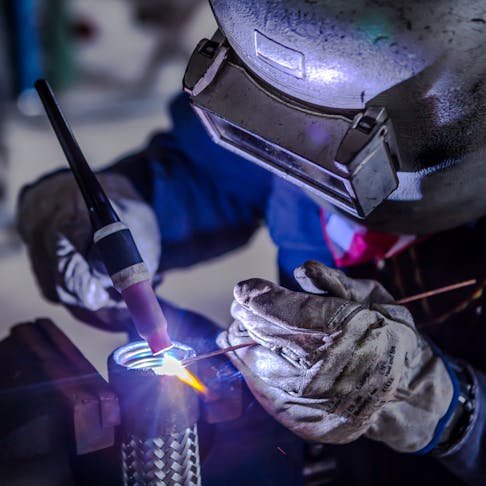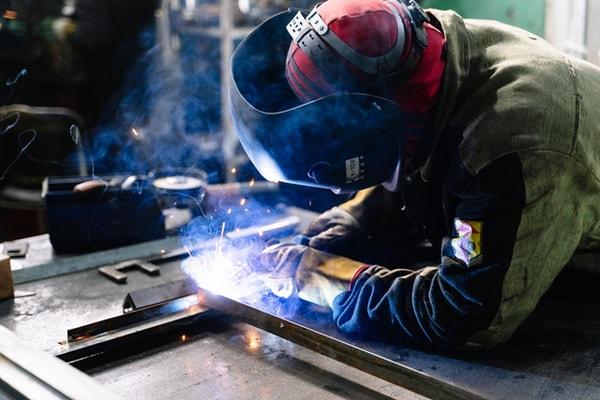Just how to Establish a Reliable Welding WPS: Tips and Finest Practices
Just how to Establish a Reliable Welding WPS: Tips and Finest Practices
Blog Article
Understanding Welding WPS Criteria: Best Practices and Techniques for High Quality Welds
In the world of welding, mastering Welding Treatment Specification (WPS) standards is a critical part that directly affects the top quality and integrity of welds. As we browse through the complexities of welding WPS requirements, discovering essential understandings and techniques for achieving top-tier welds will certainly be critical for welders looking for to succeed in their craft and create welds that stand the test of time.
Recognizing Welding WPS Criteria

Comprehending WPS requirements is essential for inspectors, engineers, and welders included in welding operations. By adhering to WPS guidelines, welders can generate welds that meet the required mechanical residential properties and structural honesty. Assessors rely upon WPS documents to verify that welding treatments are being adhered to correctly which the resulting welds are of high top quality. Designers make use of WPS requirements to create welding treatments that ensure the longevity and reliability of bonded structures.

Important Tools for Quality Welds
Grasping welding WPS criteria is important for welders to efficiently utilize the important devices required for generating top quality welds. One of one of the most essential tools for quality welds is a welding machine. The type of welding device needed relies on the welding process being used, such as MIG, TIG, or stick welding. Welding helmets are additionally important to secure the welder's eyes and face from triggers, heat, and UV radiation. In addition, welding gloves constructed from sturdy and heat-resistant products safeguard the hands from burns and injuries. Clamps and magnets assist hold the workpieces with each other securely during the welding process, making certain exact and precise welds. Cable brushes and damaging hammers are important for cleansing the weld joint prior to and after welding to remove any kind of contaminations that might influence the top quality of the weld. Finally, a measuring tape and angle mill serve tools for making sure correct placement and preparing the workpieces for welding.
Trick Strategies for Welding Success
To accomplish welding success, one must grasp the you can look here key strategies essential for creating top quality welds. Keeping a stable hand and a steady welding placement throughout the process is essential to attaining accuracy and uniformity in the welds. By understanding these essential methods, welders can raise the top quality of their work and attain welding success.
Ensuring Compliance With WPS Standards

Additionally, preserving comprehensive documents of welding criteria, equipment calibration, and evaluation outcomes is vital for demonstrating conformity with WPS requirements. By vigilantly sticking to WPS standards, welders can make sure that their work meets the needed high quality degrees and contributes to the general success of the welding task.
Troubleshooting Common Welding Issues
When confronted with typical additional info welding issues, identifying the origin is vital for reliable troubleshooting. One prevalent issue is the presence of porosity in welds, typically triggered by pollutants such as moisture, oil, or rust. To address this, ensuring correct cleaning of the base metal before welding and utilizing the right shielding gas can substantially reduce porosity. One more issue regularly encountered is lack of combination, where the weld fails to effectively bond with the base product. This can come from insufficient warmth input or improper welding technique. Readjusting specifications such as voltage, cable feed rate, or travel rate can help enhance fusion. In addition, distortion, breaking, and spatter are typical welding obstacles that can be minimized with correct joint preparation, regular warmth control, and selecting the appropriate welding consumables. By thoroughly comprehending these common welding problems and their source, welders can properly troubleshoot issues and achieve high-grade welds.
Final Thought
In final thought, grasping welding WPS requirements calls for a comprehensive understanding of the standards, making use of important tools, and applying essential strategies for effective welds. Ensuring conformity with WPS standards is vital for generating top quality welds and preventing common welding concerns. By adhering to best strategies and practices, welders can attain consistent and trustworthy cause their welding projects.
In the world of welding, mastering Welding Treatment Spec (WPS) standards is a crucial component that directly affects the top quality and integrity of welds.When delving into the realm of welding methods, a crucial facet to comprehend is the importance and intricacies of Welding Procedure Requirements (WPS) standards. WPS criteria offer an in-depth standard for welding procedures, guaranteeing uniformity, quality, and safety and security in the welding process. The type of welding machine required depends on the welding process being used, such as MIG, TIG, or stick welding.Achieving welding success through the proficiency of crucial techniques demands a thorough understanding and adherence to Welding Treatment Spec (WPS) standards.
Report this page